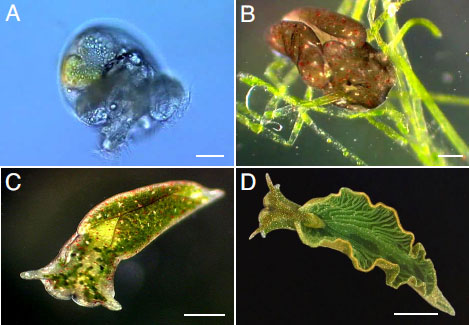An international group of researchers, led by Technion researchers, discovered for the first time the existence of a cluster of photosynthetic genes in viruses that attack marine bacteria. The group also includes researchers from Tel Aviv University, the USA and France

An international group of researchers, led by researchers from the Faculty of Biology at the Technion, managed to discover for the first time the existence of a cluster of photosynthetic genes in viruses that attack marine bacteria. This is what the prestigious scientific journal "Nature" reveals in its latest issue.
The discovery was led by doctoral students Ariela Alparovich and Iti Sharon from the faculties of biology and computer science at the Technion, under the guidance of professors Oded Beja and Ron Pinter. In addition, other researchers from the Technion, Tel Aviv University, the USA and France were partners in the research.
"Photosynthesis (assimilation) is a process that uses light energy to produce energy and create organic matter. Thanks to photosynthesis, life on Earth is possible. The process is also of enormous importance in global processes such as global warming," explains Prof. Beja. "We are used to thinking of plants in the context of photosynthesis, but in fact about half of all photosynthesis on Earth occurs in the sea, by bacteria and algae. Until recent years, viruses were not considered as part of this game. A few years ago two genes from one photosynthetic system were discovered in viruses, in our research we discovered eight genes from another system which are enough to create a complete and functioning system. This discovery raises fascinating possibilities regarding the way in which viruses infect the bacteria in the sea and also regarding the contribution of viruses to photosynthetic processes."
"This work included the development and use of computational tools from the innovative field called metagenomics, which enables the combined analysis of genetic material from a large number of organisms at the same time," adds Prof. Pinter. "During the research we used information that comes from many places in the oceans on Earth. In order to process the huge amount of information, the use of a cluster of about 100 computers is required."
Until now, only one or two genes were known to be involved in the process but alone cannot build a complete photosynthetic system. The group led by Technion researchers discovered eight genes that are sufficient to build such a system. The researchers also discovered that the viruses make changes to some of the proteins, and they hypothesize that this is how they change their ability to absorb electrons from soluble electron donors in the cell as well.
The discovery opens the door to new capabilities in understanding the function of bacterial populations in different environments using a combination of computational and experimental tools.

12 תגובות
Shmulik, hello!
Shani Aminadav Bernstein, retired biology teacher. I have written quite a few books, pamphlets and articles and continue to write today. You can go over what I wrote by my full name on GOOGLE. I would love to know something about you. Here is the link. http://www.bioteach.org.il/2011-07-29-16-23-42
All the best
Best regards, Aminadav
Aminadav,
Cool. Give a link!
A very interesting topic. A fictional story of mine, about a green man, whose body performs photosynthesis, was recently published on the biology teachers website. Although in my story it is not about the horizontal transfer of genes from bacteria, but who knows?
All the best, Aminadav
Why not consume salt water?
Photosynthetic plants will consume more drinking water, which is another resource that is disappearing.
Ami, reduce the dose of the...
😉
In the near or far future we will begin to see how we inject such viruses into non-photosynthetic eukaryotic cells and try to make them harvest light energy. From there to mice and from there to other animals. Green cows will consume less food at the expense of harvesting sunlight. In two thousand or so years, when they send the first green astronaut into space - he will have a photosynthesis kit. After we colonize the moon and Mars with simple organisms that will begin to produce oxygen and carbon dioxide, we will send there the first clones from the generation of green humans (insignificant creatures held by slaves to the original humanity) who will build for us the way to future settlement. All this could be what was spilled from the discovery of the photosynthetic viruses. Science Fiction! with a great future.
Michael thanks.
Indeed, I too would love to hear an answer to Yossi's question.
Interesting, will we see "photosynthetic engines" in the future? 🙂
exciting!
Could the fact that the virus uses only eight genes help create an artificial photosynthesis mechanism?
kid:
You understood very well and I think your question is important because many people certainly did not stand on the matter.
A virus does not sustain its own metabolism.
When it is outside a living cell it functions as a completely inert substance.
The only situation where the genes of the virus are expressed is when it invades a living cell.
Then the mechanisms of protein production and genome replication of the cell are used - the virus.
The photosynthetic genes in the virus genome probably allow the cell to create more energy and serve the virus better.
just make sure i understand
Does a photosynthetic virus that penetrates a host cell cause the host cell to produce energy photosynthetically?
Oded Beja is a top cannon!! Great respect! A lot of respect for a person who is becoming a legend from moment to moment. well done. Just have the strength to do more and more fine science, as you have been doing for many years.
Greetings friends,
Ami Bachar